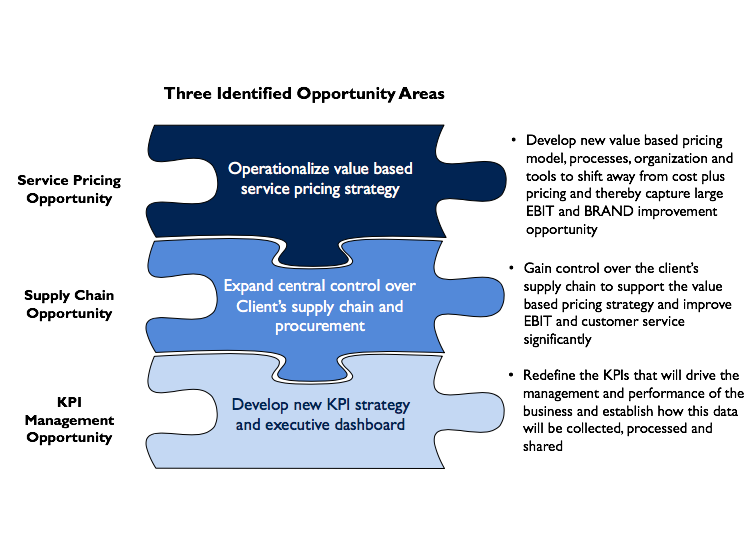Situation
Our clients needed to gain greater control of its supply chain to enable a successful implementation of a new pricing strategy. Our initial project originated with the hypothesis that our Client faced an overpricing issue that could be addressed by rapidly identifying the root causes and drafting policy recommendations to address them.
However, while overpricing was identified (especially by stores strictly following ‘the rules’), we also determined that there was significant underpricing
Consequently, we adapted our methodology to build a market basket and business case to calculate how store net pricing practices were impacting our clients EBIT and service performance.
This opportunity could potentially deliver $40m or more in annual net EBIT improvement, with initial benefits achievable in around six months
Approach
The project addressed five key objectives from establishing the value pricing system to preparation for a pilot program
- Determine “value” parts pricing
- Determine “value” service (job) pricing
- Identify rules, policies and roles
- Establish support organization and processes
- Drive change across organization
In order to deliver the project objectives and manage the identified challenges, we developed a three phase approach:
- Market Basket Expansion & Value Price Determination
- Organization and Process Preparation
- Pilot Program Development
There were a number of key challenges that were tackled to ensure the success of the project:
- Limited data granularity and availability from systems
- Complexity of parts variation (quality, makes, models, manufacturers)
- Current organization, culture and processes are not designed for centrally managed activities
- IT legacy systems, such as current POS
Results
- Delivering basis for value pricing, especially for outside parts
- Improving service level requirements
- Utilising multiple levers to achieve optimal savings above and beyond bundling and supplier consolidation
- Developing a simplified procurement process which reduced store workload in terms of building tickets
- Creating spend transparency and implement control mechanisms to ensure savings are maintained
- Achieving organisation wide buy-in through workshops and team presentations

